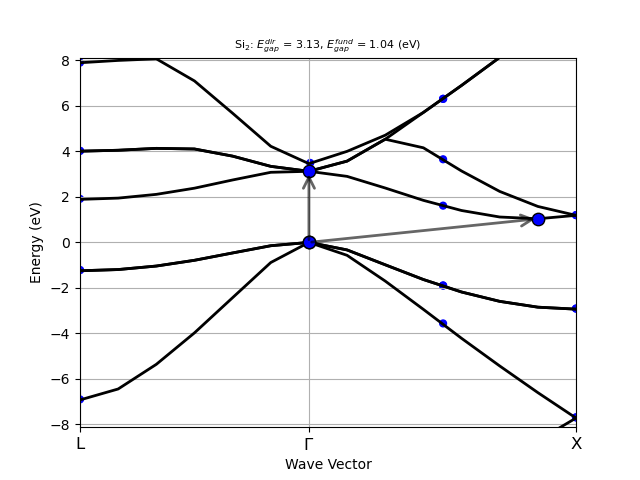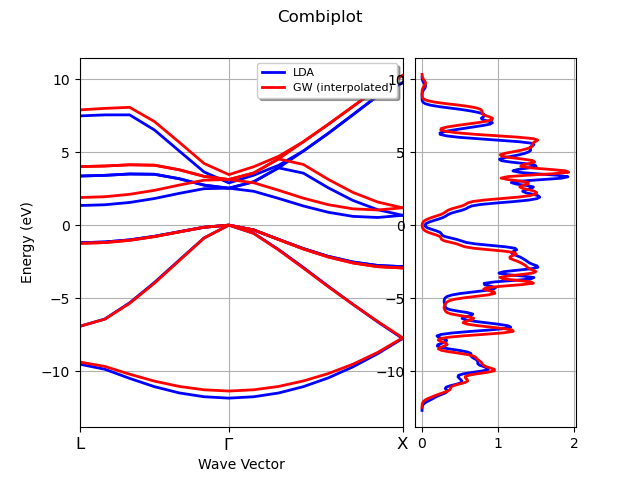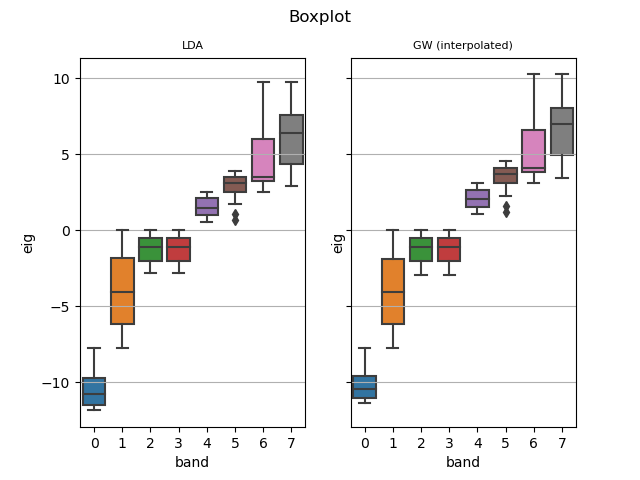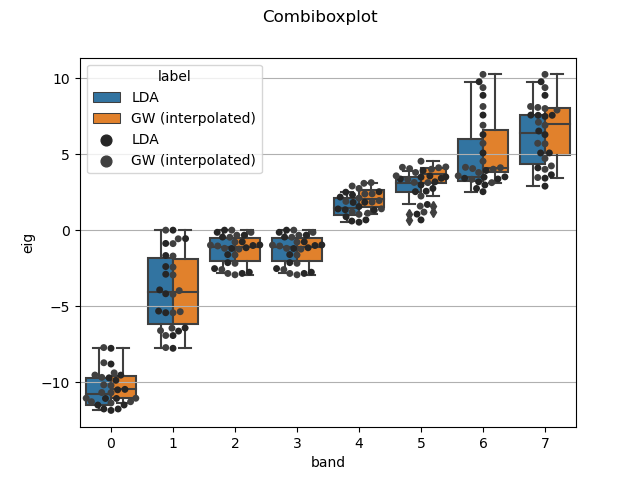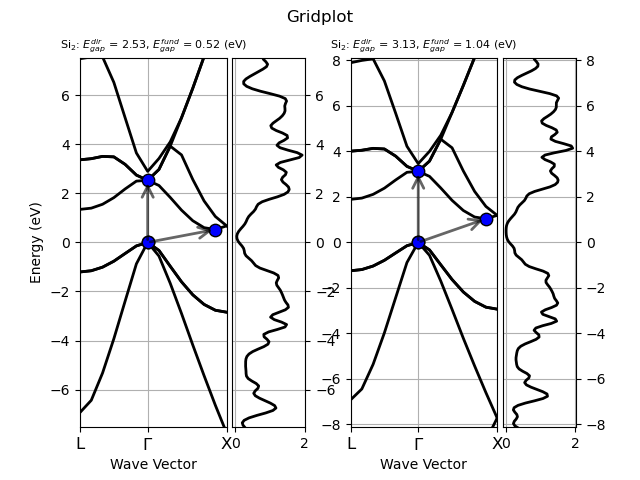Note
Go to the end to download the full example code.
GW corrections
This example shows how to interpolate the GW corrections and use the interpolated values to correct the KS band structure computed on a high symmetry k-path and the KS energies of a k-mesh. Finally, the KS and the GW results are plotted with matplotlib.
Using: 30 star-functions. nstars/nk: 5.0
FIT vs input data: Mean Absolute Error= 1.367e-13 (meV)
import abipy.data as abidata
from abipy.abilab import abiopen, ElectronBandsPlotter
# Get quasiparticle results from the SIGRES.nc database.
sigres = abiopen(abidata.ref_file("si_g0w0ppm_nband30_SIGRES.nc"))
# Read the KS band energies computed on the k-path
with abiopen(abidata.ref_file("si_nscf_GSR.nc")) as gsr_nscf:
ks_ebands_kpath = gsr_nscf.ebands
# Read the KS band energies computed on the Monkhorst-Pack (MP) mesh
# and compute the DOS with the Gaussian method
with abiopen(abidata.ref_file("si_scf_GSR.nc")) as gsr_scf:
ks_ebands_kmesh = gsr_scf.ebands
ks_edos = ks_ebands_kmesh.get_edos()
# Interpolate the QP corrections and use the interpolated values to correct
# the KS energies stored in `ks_ebands_kpath` and `ks_ebands_kmesh`.
#
# The QP energies are returned in r.qp_ebands_kpath and r.qp_ebands_kmesh.
# Note that the KS energies are optional but this is the recommended approach
# because the code will interpolate the corrections instead of the QP energies.
r = sigres.interpolate(lpratio=5,
ks_ebands_kpath=ks_ebands_kpath,
ks_ebands_kmesh=ks_ebands_kmesh
)
qp_edos = r.qp_ebands_kmesh.get_edos()
# Get points with ab-initio QP energies from the SIGRES so that
# we can plot the interpolate interpolated QP band structure with the first principles results.
# This part is optional
points = sigres.get_points_from_ebands(r.qp_ebands_kpath, size=24)
r.qp_ebands_kpath.plot(points=points, with_gaps=True)
#raise ValueError()
# Shortcut: pass the name of the GSR files directly.
#r = sigres.interpolate(ks_ebands_kpath=abidata.ref_file("si_nscf_GSR.nc"),
# ks_ebands_kmesh=abidata.ref_file("si_scf_GSR.nc"))
#ks_edos = r.ks_ebands_kmesh.get_edos()
#qp_edos = r.qp_ebands_kmesh.get_edos()
# Use ElectronBandsPlotter to plot the KS and the QP band structure with matplotlib.
plotter = ElectronBandsPlotter()
plotter.add_ebands("LDA", ks_ebands_kpath, edos=ks_edos)
plotter.add_ebands("GW (interpolated)", r.qp_ebands_kpath, edos=qp_edos)
# Get pandas dataframe with band structure parameters.
#df = plotter.get_ebands_frame()
#print(df)
# By default, the two band energies are shifted wrt to *their* fermi level.
# Use e=0 if you don't want to shift the eigenvalus
# so that it's possible to visualize the QP corrections.
plotter.combiplot(title="Combiplot")
plotter.boxplot(swarm=True, title="Boxplot")
plotter.combiboxplot(swarm=True, title="Combiboxplot")
# sphinx_gallery_thumbnail_number = 4
plotter.gridplot(title="Gridplot", with_gaps=True)
sigres.close()
Total running time of the script: (0 minutes 1.710 seconds)
